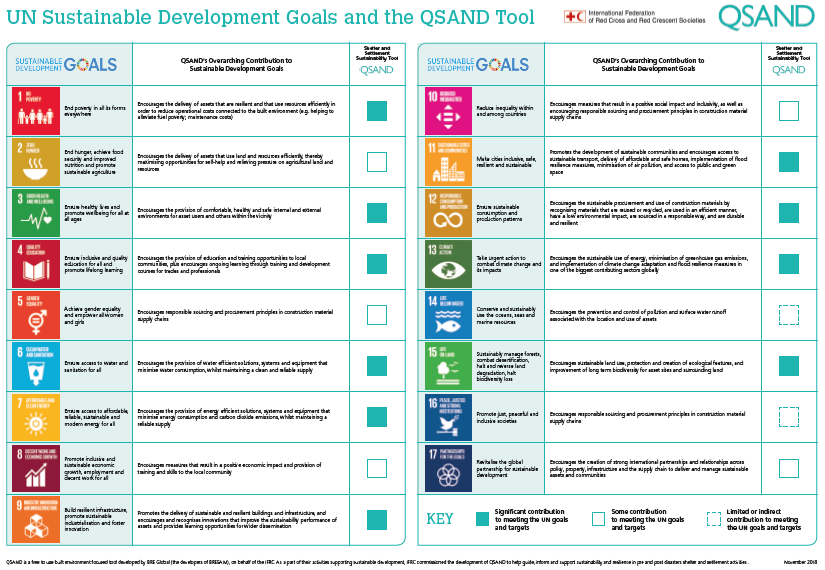 The UN Sustainable Development Agenda, adopted by world leaders in 2015, maps out a 15-year plan to fight inequality, end poverty, and tackle climate change challenges. The 17 goals are designed to build upon the Millennium Development Goals and go further towards ensuring sustainability is at the forefront of human development up until 2030. For BRE, sustainability and resilience are key focus areas. Through QSAND we are making a contribution to aid the achievement of several of these goals in disaster-affected communities around the globe.
The UN Sustainable Development Agenda, adopted by world leaders in 2015, maps out a 15-year plan to fight inequality, end poverty, and tackle climate change challenges. The 17 goals are designed to build upon the Millennium Development Goals and go further towards ensuring sustainability is at the forefront of human development up until 2030. For BRE, sustainability and resilience are key focus areas. Through QSAND we are making a contribution to aid the achievement of several of these goals in disaster-affected communities around the globe.
Central to the thinking behind the QSAND tool is that sustainable approaches to reconstruction can help limit the impact disasters have in the short, medium and long term and improve the resilience of local communities to future disasters as they occur. It is this holistic approach and a strong focus on the development of local skills and capabilities that demonstrates QSANDs overarching support for the SDGs.
In addition to its focus on sustainable cities and communities (SDG 11), QSAND supports the goals by promoting clean and renewable energy solutions (SDG 7), responsible consumption (SDG 12), and clean water and sanitation (SDG 6) alongside many other areas.
Consideration of the natural environment alongside the needs of people globally is important in measuring success in the pursuit of the SDGs. It can offer a form of protective barrier against disasters. QSAND does this by providing a framework which can be used to support protection of local ecology, balancing this against the maintenance of livelihoods and economic prosperity. Often, protecting natural resources can also support livelihoods, further reducing a community vulnerability to disasters.
Whilst QSAND is designed as a tool to be used in response to a specific disaster to support the recovery process, its sustainability scope is wider than this. By considering the medium to longer-term impacts of decisions made in the early days of disaster recovery, it helps provide a framework that can help avoid, limit or mitigate further harm to the natural environment that can occur during reconstruction.
QSAND is proud to support the aims laid out in the Sustainable Development Goals, and support efforts to contribute to the global movement towards a sustainable, resilient, and prosperous future.



